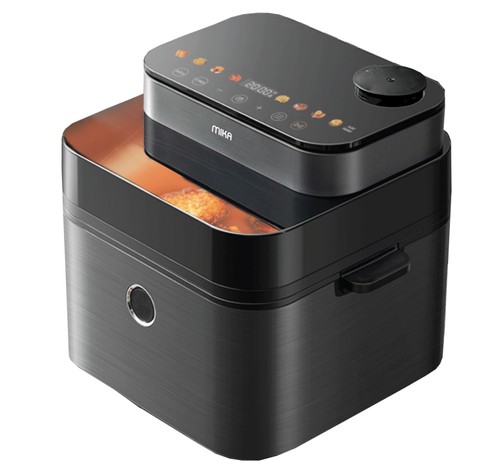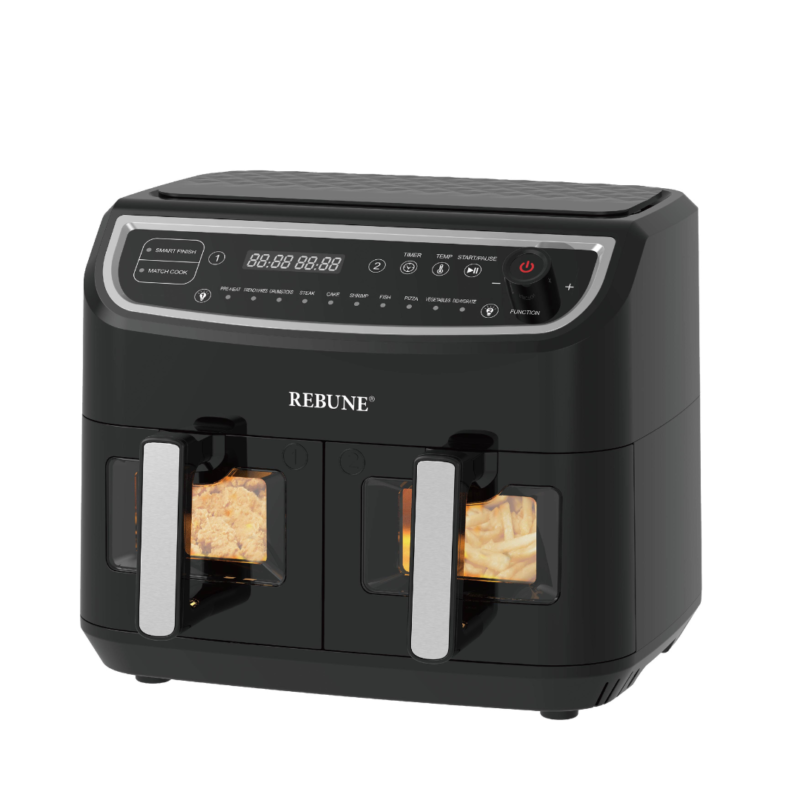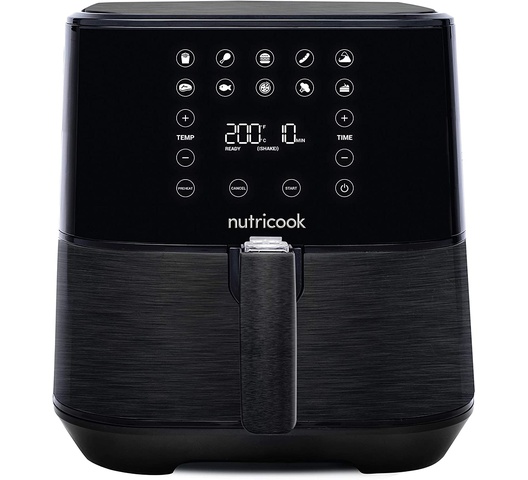The Complete Guide to Air Fryers: Everything You Need to Know

Introduction
Air fryers have significantly changed modern cooking by offering a healthier alternative to traditional frying methods. The concept of air frying originated in the early 2000s, gaining substantial traction as more households sought to reduce their oil intake without compromising taste. The basic principle behind air frying involves circulating hot air around the food, creating a crispy outer layer similar to conventional frying but with significantly less oil. In this article, we will explore some of the benefits of using an air fryer, and know more about factors to consider when choosing an air fryer. Let’s get started!
Types of Air Fryers
Air fryers have gained immense popularity in both commercial and non-commercial settings due to their ability to cook food with significantly less oil. Understanding the distinct features of commercial and non-commercial air fryers can help determine which type better suits your needs.
1. Commercial Air Fryers

Designed to withstand heavy-duty usage, commercial air fryers are primarily used in restaurants, catering businesses, and other food service establishments. These air fryers boast larger capacities, often exceeding 10 liters, to accommodate bulk cooking. Built with robust materials and enhanced durability, they can handle continuous operation without compromising performance. Additionally, commercial air fryers usually offer advanced functionalities, such as programmable settings, multiple cooking modes, and enhanced temperature controls. However, these features come at a higher price point, reflecting their superior build quality and extended lifespan.
2. Non-Commercial Air Fryers

Tailored for household use, non-commercial air fryers come in various sizes to suit different family needs. Typically, their capacities range from 2 to 6 liters, making them ideal for preparing meals for small to medium-sized families. Non-commercial air fryers emphasize user-friendly features, such as preset cooking functions, digital displays, and easy-to-clean components. They are also more affordable compared to their commercial counterparts, making them accessible to a wider audience. While they may not offer the same level of durability or advanced functionalities as commercial models, non-commercial air fryers provide adequate performance for everyday cooking tasks.
Air fryer capacities vary from small (1.2-2 liters) for singles or couples, medium (3-4 liters) for small families, large (5-6 liters) for larger households, to extra-large (7+ liters) for big families or frequent entertainers. Select based on household size and cooking needs.
Benefits of Using an Air Fryer and How It Affects Food Quality
Air fryers have gained significant popularity due to their ability to provide healthier cooking options with less oil. Some of the advantages include:
- Use Less Oil – Traditional frying methods often require submerging food in oil, which can lead to high-fat content in the final product. In contrast, air fryers often require just a tablespoon of oil or none at all, significantly cutting down the amount of added fat and calories. This makes air-fried foods a healthier alternative while still providing the satisfaction of a crispy texture.
- Efficiency and Speed – Air fryers can cook food faster than conventional ovens because of their compact size and the rapid circulation of hot air. This means that meals can be prepared quickly, making air fryers an excellent option for busy individuals or families looking for convenient cooking solutions.
- Versatility – The versatility of air fryers is another noteworthy benefit. They are capable of cooking a wide range of dishes, from fries and chicken wings to vegetables and even baked goods. This versatility allows users to explore various types of cuisine and cooking styles without needing multiple kitchen appliances.
- Easy to Clean – The ease of cleanup is another compelling reason to consider an air fryer. Most air fryer components are dishwasher-safe, making the cleanup process straightforward and hassle-free. This convenience is particularly appealing to those who dread the after-meal cleanup that typically follows traditional cooking methods.
- Faster cooking times. Unlike traditional ovens, air fryers preheat more quickly and maintain consistent temperatures, ensuring that food is cooked more evenly. This efficiency makes it a practical option for preparing a variety of Kenyan foods, from samosas to nyama choma, in a fraction of the time.
When comparing the texture and taste of air-fried food to traditionally fried food, many find that air-fried items can achieve a similar level of crispiness and flavor. While there might be slight differences in texture, the health benefits often outweigh these minor variations. The ability to enjoy crispy, delicious meals without excessive oil makes air frying an attractive option for those looking to maintain a healthier diet. Discover some of the Kenyan cuisines you can make using an air fryer.
Factors to Consider When Buying an Air Fryer
Choosing the right air fryer involves evaluating several critical factors to ensure it meets your culinary needs and preferences.
1. Capacity
One of the foremost considerations is the capacity of the air fryer. Depending on the size of your household or the frequency of your cooking, you may need an air fryer with a larger or smaller basket. A larger capacity is beneficial for preparing meals for families or entertaining guests, while a compact model may be adequate for singles or small households.
2. Features and Functionality
Modern air fryers come with a range of settings and presets, including temperature control, timer functions, and specific cooking modes for various types of food. Advanced models might offer additional features like dehydrating, roasting, or baking capabilities. Assessing these features can help determine the versatility of the air fryer in your kitchen.
3. Ease of use and maintenance
Opt for an air fryer with a user-friendly interface and clear instructions. Non-stick and dishwasher-safe components can significantly simplify the cleaning process, making it more convenient for everyday use. Moreover, consider the physical size and design of the air fryer to ensure it fits well in your kitchen space.
4. Budget
Price is another crucial factor. While air fryers are available in a broad price range, it’s essential to balance cost with the features and quality offered. Higher-priced models often come with more advanced features and better build quality, but many budget-friendly options perform excellently.
5. Reviews and Warranty
Reviewing customer feedback and checking warranties is vital. Customer reviews provide insights into the real-world performance and reliability of the air fryer, while a comprehensive warranty can offer peace of mind and protection against potential defects.
When it comes to popular air fryer brands, several names stand out in the market. Kenwood, Nutricook, and Silver Crest are renowned for their innovative designs and robust features. Rebune, Mika, and Electrolux offer a range of models catering to different budgets and preferences. Von, Ramtons, and Hisense are known for their reliable performance and user-friendly interfaces. Boma and Signature also provide competitive options with unique features and solid warranties. By considering these factors and exploring these brands, you can make a well-informed decision and find the air fryer that best suits your needs.
Conclusion
In conclusion, air fryers are a fantastic kitchen gadget for anyone looking to make healthier meals without compromising on taste. Their ability to cook a variety of foods quickly and evenly, combined with their ease of use and cleaning, make them a popular choice for home cooks. Whether you’re a culinary novice or an experienced chef, an air fryer can be a valuable tool in your kitchen arsenal.
